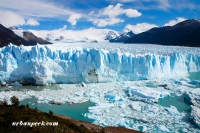
ORGANIZATIONS UNITED For Responsible Low-Level Radioactive Waste Solutions: The widespread uses and benefits of radioactive materials are one of our society's great untold stories. Few Americans realize that our advanced industrial economy and high standard of living would not be possible without the use of radioactive materials in medicine, agriculture, industry, science and government. We thank Eric Jelinski, President of Environmentalists for Nuclear - CANADA, for providing this document from 1994.
Advanced Medical Isotope Corporation, James Katzaroff: October 6, 2016 / Advanced Medical Isotope Corporation, a late stage radiation oncology focused medical device company announced that the first household pet, a cat, has been treated for cancer with the pet version of the Y-90 RadioGel(TM) device. Following the initial treatment, the cat is scheduled to undergo seven follow-up appointments over a two year period. The study outcome data will be reported to AMI periodically.
Nuclear Africa, Kelvin Kemm: What is nuclear medicine? Nuclear medicine involves the application of radioactive substances to people, in both the diagnosis and the treatment of disease. In nuclear medicine procedures, radioisotopes are combined with other chemicals or pharmaceutical compounds to form radiopharmaceuticals. They migrate through the body and localise in specific organs or cellular receptors. This property provides nuclear medicine with the ability to image the extent of a disease process in the body, based on the cellular function and physiology, rather than relying only on physical changes in the tissue anatomy.
International Atomic Energy Agency, IAEA: This is the May, 2010 review of worldwide production and supply of molybdenum 99, which is extremely important in diagnostic nuclear medicine. In February, 2010 a letter was sent to the Office of Science and Technology Policy, The White House recommending that the United States focus on domestic production of molybdenum 99. The reply was that they were working on it. One member of the team working on it was positive and thought the problem would be solved with the renewed efforts. Scientists who worked on production of radioisotopes in American reactors were not optimistic about the renewed efforts. In 2016, an American medical professional said that he didn't think he would see satisfactory domestic production of this very important isotope in his life time. Thus is the government progress in the USA.
Christine Craig, 21st Century Science & Technology - The use of radioisotopes for the diagnosis and treatment of disease is now a vital part of modern medical practice. The most vulnerable link is the production and supply lines of the medical radioisotope most in demand throughout the world, technetium-99m. The United States is left with no domestic source (2010) for an isotope that is used in more than 30 million diagnostic procedures each year worldwide, and almost 20 million procedures in the United States alone.
Don Robertson is the retired Managing Director of NTP Radioisotopes SOC Ltd of South Africa. This article is very important because it gives a summary of the worldwide problems facing the production of the the radioisotope, Mo-99. This isotope is the workhorse of diagnostic nuclear medicine, used in approximately 80,000 Tc-99m scans per day. A variety of policies and regulations result in restricting full cost recovery for producers of this vital radioisotope. For all newsletters, see website: http://wci-ici.org/
Alan Waltar, Author of "radiation and Modern Life: Fulfilling Marie Curie's Dream" and James Katzaroff, CEO of Advanced Medical Isotopes Corp., World Council on Isotopes. By 2004, two-thirds of the elements in the Periodic Table had produced at least one commercially utilized radioisotope: 63 for medicine, 27 for industry, 31 for environmental protection. For nuclear medicine, 10% of the radioisotopes were used in therapy and 90% in diagnostics. This report examines the progress in the last ten years. For all newsletters, see website: http://wci-ici.org/
Alan Waltar -¿Cómo sería nuestro mundo hoy si la radiación no hubiera sido empleada para servir nuestras necesidades humanas? Una manera de apreciar en algo a esta moderna servidora es pasar un día típico con nuestras antenas particularmente sensibilizadas a la conciencia del rol de la radiación.
T.C. Stieglitz et al. - Radioisotopes are efficient tracers of coastal processes on various spatial and temporal scales. The isotopes of radon and radium are particularly useful tools to understand hydrological land-ocean interaction.
Assessing non-reactor based isotope production through examining Canada’s recent decision to shift towards particle accelerator generation of its major medical radioisotopes and similar initiatives around the world, including Belgium and Germany;
- Latest
- Popular














